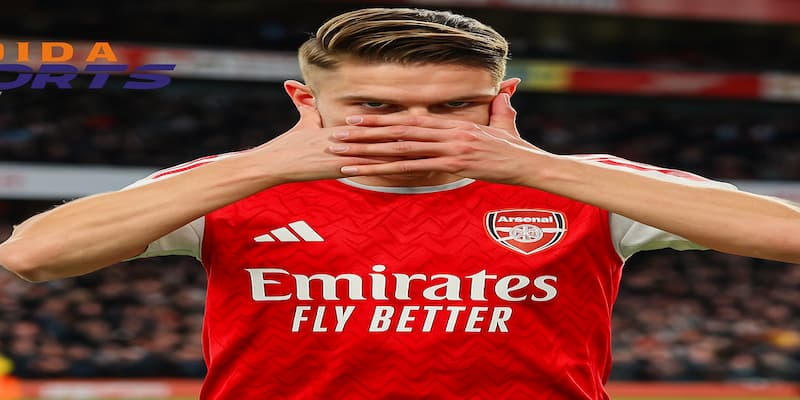A quiet revolution is taking place in the heart of Premier League attacks. The towering No. 9 is no longer a nostalgic throwback but a carefully calibrated piece in the modern tactical machine. The summer of 2025 has seen an unprecedented surge in clubs investing in elite, physically dominant centre-forwards—many of whom are north of six feet three inches. The trend suggests a deep tactical shift, a recalibration of roles, and a growing acknowledgement that height, presence, and hold-up play—traits once associated with old-school strikers—are again integral to the modern game.
Just a few years ago, it would have seemed anachronistic. In an era where false nines, inverted wingers, and fluid attacking rotations were the tactical flavour, the physically imposing striker looked like a dying breed. But now, they are not just back—they are central.
From Nostalgia to Necessity
Leading the charge, of course, is Manchester City’s Erling Haaland. Towering at six feet five, the Norwegian is not just a brute-force forward. He is a phenomenon—32 league goals last season, but beyond the numbers, a menacing presence that bends defensive lines and attracts double-marking schemes. His profile has been both a template and a trigger.
Across the league, clubs are following suit. Arsenal’s marquee signing, Viktor Gyökeres (6’4”), has already made waves with his off-ball movement and link-up intelligence during preseason. Newcastle United are in a race to seal the services of Benjamin Sesko (6’4”), while Liverpool have added Hugo Ekitike (6’3”) to complement the more mobile, pressing-heavy profiles of Darwin Núñez and Cody Gakpo.
Chelsea, in their eternal quest for a reliable striker, have turned to Liam Delap (6’2”) and Joao Pedro (6’1”), adding both power and promise. Manchester United’s eyes, too, remain fixed on bolstering their aerial and physical presence up front.
The emphasis on size, however, is not mere aesthetic. This isn’t a return to the Route One football of yesteryear, but a response to a more sophisticated question: how do you break down low blocks, stretch high lines, and battle against teams that are both tactically disciplined and physically compact?

Towering-at-six-feet-five-the-Norwegian-is-not-just-a-brute-force-forward
Evolving Demands of the No. 9
To understand why the tall centre-forward is gaining tactical currency, it’s important to trace how the role has evolved.
In the early 2000s, the Premier League was dominated by powerhouses like Didier Drogba and Emmanuel Adebayor—big men who bullied defenders, held up play, and thrived on crosses. Then came the Spanish revolution. Pep Guardiola’s Barcelona, with their reliance on technical superiority and fluid movement, made the false nine fashionable. Lionel Messi, Cesc Fàbregas, and even Francesco Totti were deployed in roles where space-making and playmaking took precedence over aerial duels and physical tussles.
The trend filtered into England. Roberto Firmino at Liverpool became the model false nine—dropping deep, pressing intelligently, and enabling wide forwards like Mo Salah and Sadio Mané to thrive. Manchester City, under Guardiola, often played without a recognised striker altogether.
In that ecosystem, the big man felt obsolete.
But football, as ever, is cyclical. Now, the expectations are hybrid. The contemporary centre-forward must combine the intelligence of a false nine with the physicality of a classic No 9. He must drop deep to link play, press from the front, stretch defences with runs in behind, and still dominate in the air.
This hybrid profile—of height, power, pace, and touch—is rare. That’s why clubs are willing to pay top dollar for it.

The-contemporary-centre-forward-must-combine-the-intelligence-of-a-false-nine-with-the-physicality-of-a-classic-No-9
Why This Shift Is Happening Now
Several overlapping factors explain this shift.
First, the prevalence of low-block defending. As mid-table and relegation-threatened teams have become more compact and disciplined, unlocking space in the final third has become harder. The presence of a physically dominant forward adds a direct outlet—someone to win duels, hold up the ball, and occupy multiple defenders.
Second, crossing has returned as a key offensive tool. With inverted fullbacks now joining midfield, the width is often provided by wingers or advanced wingbacks who whip in early crosses. The success of this approach hinges on having someone to meet them.
Third, pressing systems have evolved. Managers want forwards who can initiate the press but also win long balls if the opposition bypasses the midfield. Tall strikers with good athleticism—like Isak or Haaland—are ideal.
Fourth, there’s a psychological edge. A tall, commanding striker is a focal point—not just tactically but emotionally. He gives teammates a target, defenders a worry, and fans something primal to latch on to. Haaland’s physical dominance is not just tactical—it’s theatrical.

Managers-want-forwards-who-can-initiate-the-press-but-also-win-long-balls-if-the-opposition-by-passes-the-midfield
The Economics of the Tall Striker
This isn’t a trend that’s flying under the radar. Premier League clubs have spent over £230 million on such profiles this window, with the number likely to touch £500 million by the close of the market. That is a staggering commitment—and it’s not a coincidence.
Clubs are beginning to understand the value of these profiles not just in goals, but in structure. A player like Gyökeres, even if he doesn’t score 25 league goals, can transform a team’s attacking shape. He allows midfielders to advance, wingers to cut inside, and fullbacks to overlap freely.
It’s no longer about quantity of goals alone. It’s about functionality and fit.

A-player-like-Gyökeres-even-if-he-doesn’t-score-25-league-goals-can-transform-a-team’s-attacking-shape
Is This a Passing Phase or a New Norm?
There will always be room for smaller, nimbler forwards. The likes of Julian Alvarez, Gabriel Jesus, or Raheem Sterling offer a different kind of threat—elusive, intelligent, press-resistant. But the resurgence of the tall striker is not a fad. It reflects a tactical correction, a response to the meta-game of modern football.
Managers now seek balance. The ideal attack includes runners, creators, and a focal point. That focal point, increasingly, is someone who can blend physical presence with technical finesse.
The Premier League, with its pace and physicality, has always been fertile ground for such profiles. What’s changed is the sophistication with which they are now deployed.
Erling Haaland may be the prototype, but what makes this trend significant is the variety it encompasses. Viktor Gyökeres isn’t a battering ram—he’s a clever runner. Isak isn’t just a header merchant—he’s silk in a tall frame. Even Sesko brings as much finesse as he does force.

The-Premier-League-with-its-pace-and-physicality-has-always-been-fertile-ground-for-such-profiles
Conclusion: The Shape of Things to Come
The Premier League’s centre-forward is evolving again—this time into something more complete, more demanding, and more intriguing. The height is back, but not at the expense of touch or intelligence. The body is big, but so is the brain.
In a league where marginal gains matter, where pressing structures and positional play often cancel each other out, having someone who can turn a long ball into a scoring chance, a half-cross into a goal, is invaluable.
So when Viktor Gyökeres rises above two defenders to nod in a winner, or Hugo Ekitike bullies a centre-back off the ball to square for a teammate, know this: the tall striker isn’t a throwback.
Click here to watch more!



















Comments